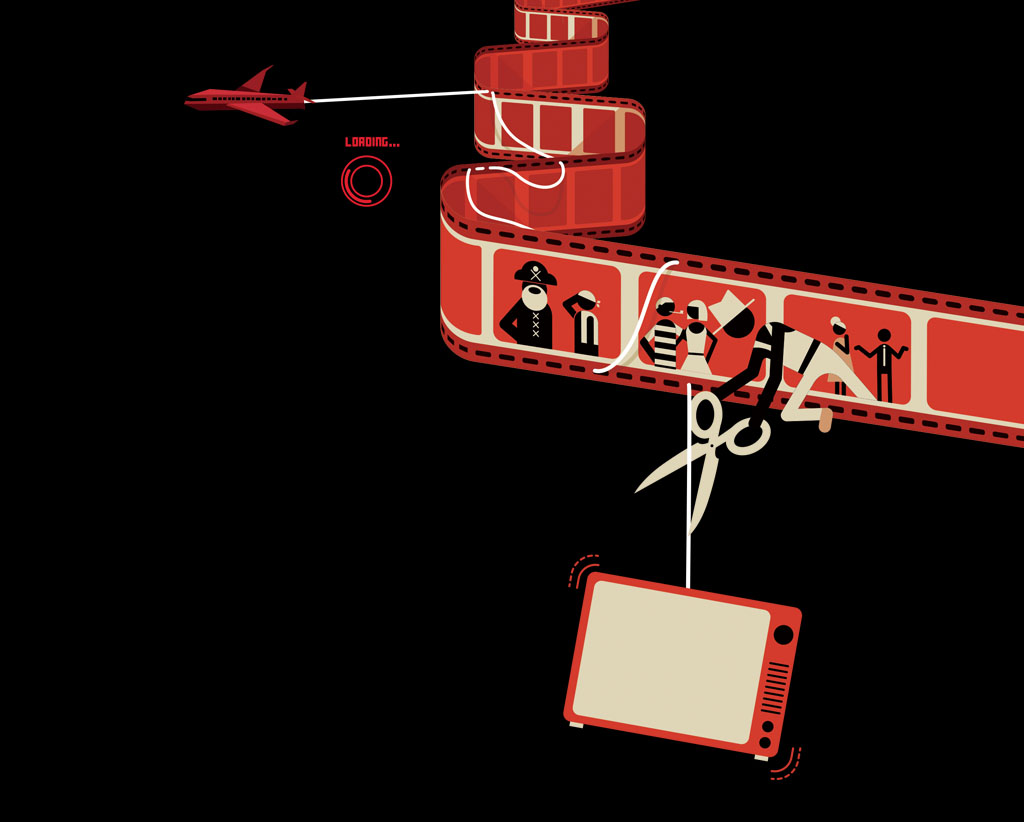Written for the Airline Passenger Experience Association
APEX Experience Magazine – Issue 6.1 – January/February 2016
The appetite for binge-friendly streaming services like Netflix, Amazon or Hulu, over expensive cable or satellite TV packages, appears to be insatiable.
“Streaming video has grown at such a rapid pace in North America that the leading service in 2015, Netflix, now has a greater share of traffic than all of streaming audio and video did five years ago,” says Dave Caputo, CEO of Sandvine, a broadband network solutions provider. Based on a recent Sandvine study, real-time entertainment streaming now accounts for more than 70 percent of evening Internet traffic in North America.
According to an ITU/United Nations study, 43 percent of global households now have Internet access, and over 95 percent of the world’s population is now covered by mobile-cellular services, with an estimated 3.5 billion mobile-broadband subscriptions.
In-flight entertainment has seen a similar evolution, from a single movie displayed throughout the cabin to a small selection of titles available on a seatback display, and then to a library of content stored in onboard servers, distributed to high-definition screens or personal electronic devices. Now, high-bandwidth connectivity brings the potential of streaming unique content to every seat. Passengers want to take control, and match their ground-based viewing experience by accessing their subscription services in flight.
ViaSat, Gogo and Inmarsat provide but three of the emerging satellite technologies that will give passengers streaming access to their subscription services. Already available over North America, Amazon Prime members flying on JetBlue can stream content, and Virgin America passengers are beginning to binge-watch programs from the Netflix library, either by logging in or signing up via a free 30-day trial. As more high-power satellites become operational, along with new-technology antenna installations and upgrades, worldwide in-flight streaming will become a reality.
But that reality comes at a cost, both for an airline and its passengers. “Obviously, the bandwidth to stream this type of content, possibly high-definition, can be quite costly, depending on the network being used. Some airlines and subscription services might end up footing the bill for the passenger access, but this will most likely not be the norm,” Jeff Crawford, senior vice-president of Non-Theatrical Sales, Warner Bros., tells APEX Media in an exclusive op-ed. “Passengers may balk at paying as much or more to access their accounts as they would pay for a first-run movie ticket. What about the passengers who do not already have a subscription service? Are they left out in the cold?”
Perhaps not, says Shane Mitchell, chief digital officer for Singapore-based MediaCorp. “One idea is to provide a free or lite version of service for passengers, or a one-journey subscription. Part of the success of subscription services has been their personalization and wide choice, so it’ll be important that any free or lite version of a service doesn’t lose its coherence as an offering,” says Mitchell.
On the ground, subscription services are starting to install servers containing full copies of their libraries with key Internet service providers in order to reduce bandwidth bottlenecks and costs. A variation of this model could appear on airplanes, but it would still face challenges, explains Mitchell. The ground-based units “hold around 200 terabytes, or eight years of video, in a box weighing under 60 kilograms, but with library changes amounting to several terabytes a day, keeping them updated would still demand high bandwidth either in the air or on the apron,” he says.
Beyond technical difficulties, Jeff Crawford says that this concept changes the licensing model. “Passengers accessing their regular paid-for subscriptions on their personal devices while using the airline’s Wi-Fi network are more than likely for personal use rather than a public performance,” he explains. “If a subscription service such as Amazon or Netflix wants to distribute its services via an existing onboard system or install its own server on an aircraft, it is no longer a home-entertainment type of situation and there would need to be a non-theatrical public performance license for such a product.”
Sometimes the technological genie escapes from the bottle, giving us capabilities that can’t yet be fully exploited – at least until the content owners come to terms with the latest tech.
Read the original story in APEX Experience Magazine – Issue 6.1
